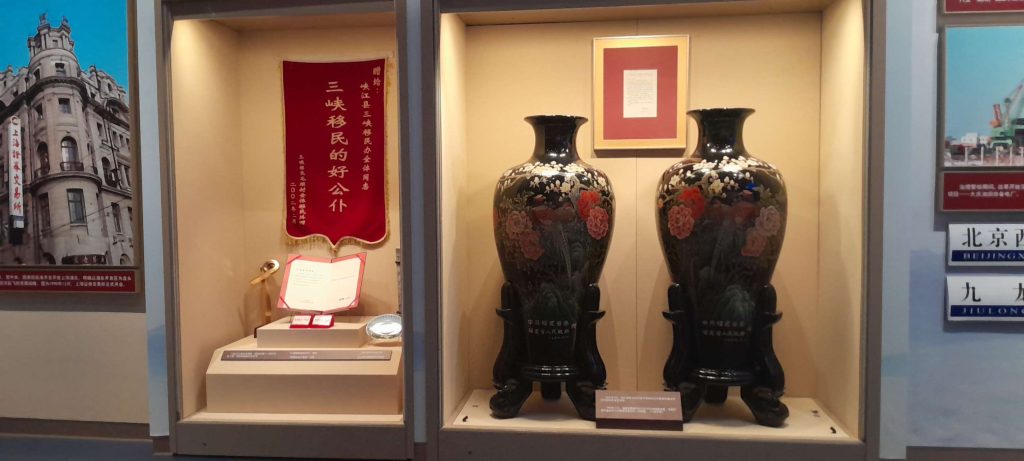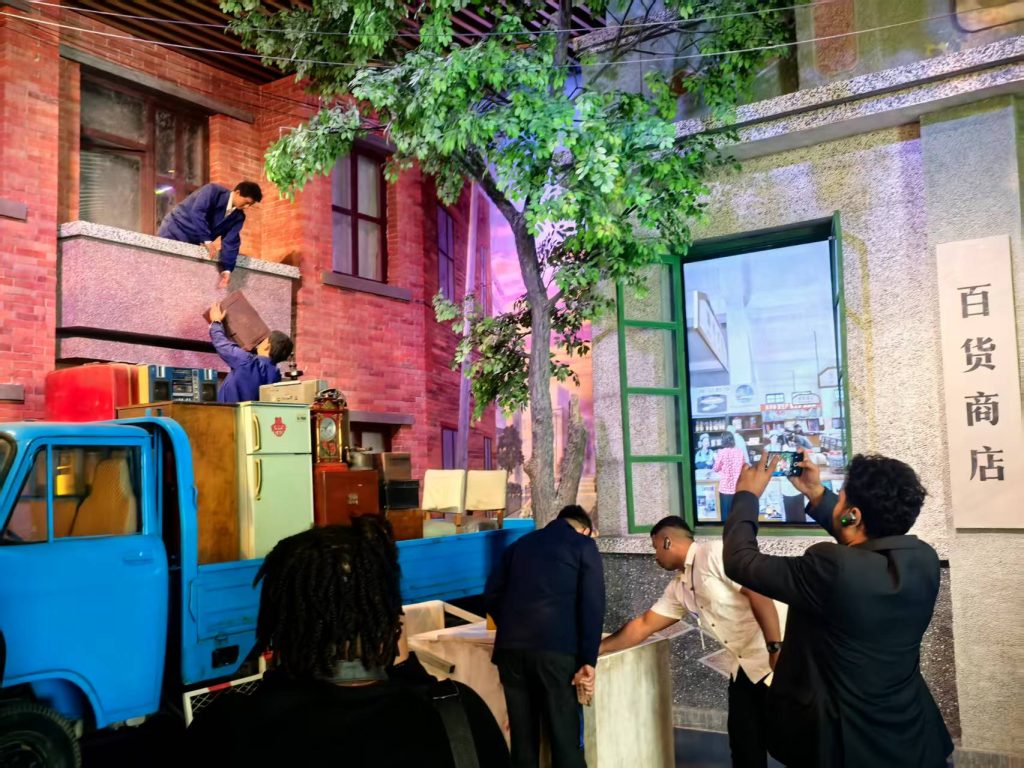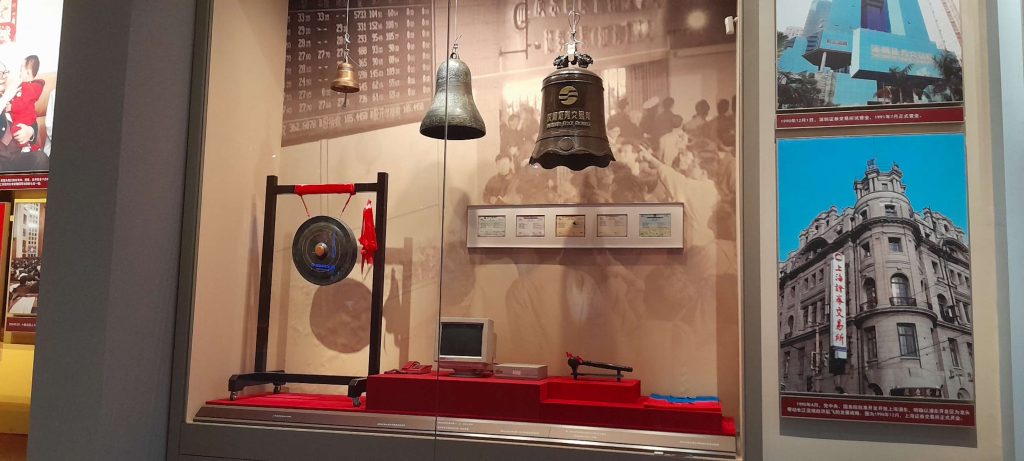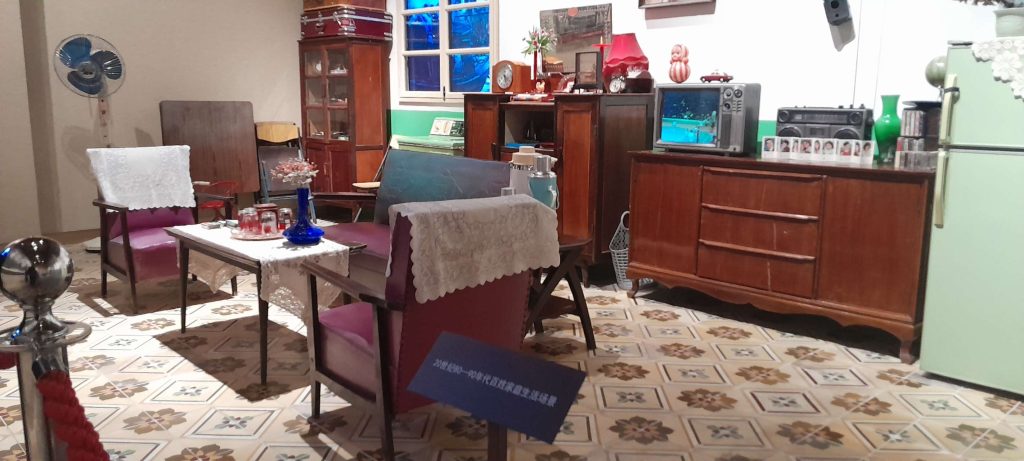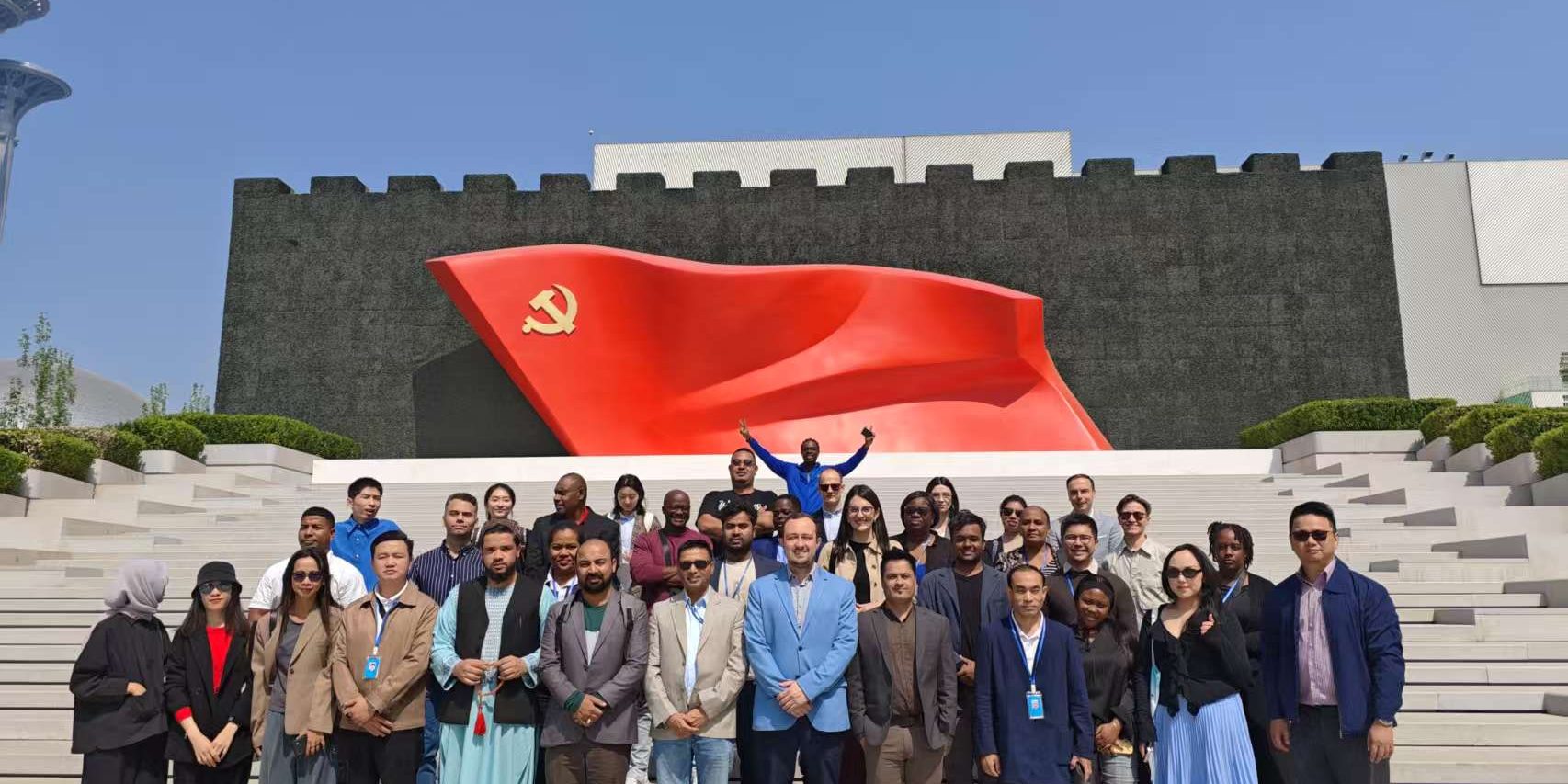FOREIGN journalists, undertaking a three-month study tour in China, were taken on a unique and insightful journey into the history and heart of China’s political evolution during a guided tour of the CPC Musuem in Beijing where more than 2.500 pictures and over 4,500 sets of cultural relics are displayed, providing a comprehensive, panoramic and epic presentation on the history of the party and the Chinese people.
The landmark musuem, which was opened upon the 100th anniversary of the CPC in 2021, is described as CPC’s spiritual home and a gateway to understanding a century of profound transformation and enduring legacy.
The traditional colonade structured musuem is built in the shape of the Chinese character ‘gong.’ Gong looks like a horizontal alphabetical letter ‘H’ and means workers or labour in Chinese. The gong design indicates that the CPC is the vanguard of the Chinese working class, the Chinese people and nation as a whole.
The traditional colonnade structures represent the essence of Chinese architecture, which is upright, foursquare and simple, but grand.
28 colonnades on the eastern and western sides of the exhibition hall, symbolise that after 28 years of struggle, the CPC established New China.
In the musuem square stand five magnificent sculptures. The huge one of them is the CPC flag sculpture, indicating that the CPC flag offers direction and is a source of strength of the Chinese people and nation. In the four other sculptures are a total of 276 figures, which tell the story of the CPC’s 100-year struggle for the well-being of the Chinese people and national rejuvenation.
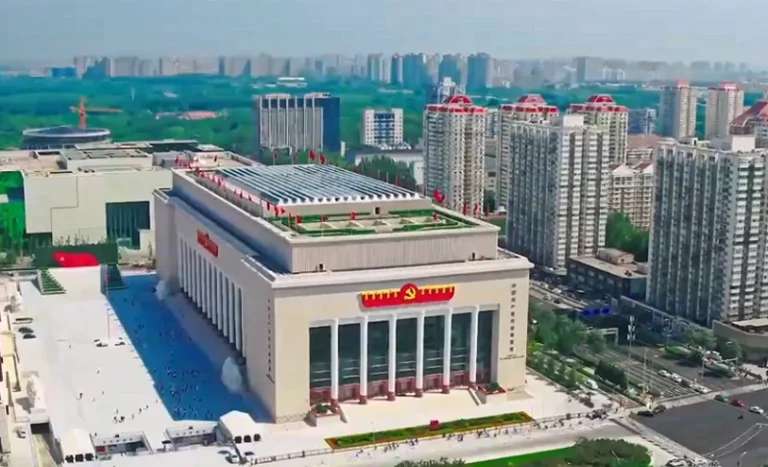
Nearly two-thirds of the main building area, or about 150,000 square metres, has been designed as exhibition space.
In the exhibition hall, a special post office is set up to serve visitors and tell CPC history through its services, using a special postcode “100100”, which does not only symbolise that the museum was completed upon the 100th anniversary of the founding of the Party, but also that the CPC is marching forward toward its two centenary goals.
The museum also utilises various audiovisual technologies, including digital and film materials, allowing visitors to have a more comprehensive and authentic experience of the challenging pioneering efforts of the revolutionaries.
In the immersive “4D+ Six-sided” cinema experience zone of the Red Army’s Long March, a panoramic LED display realistically reproduces the scenes of the Long March, enabling viewers to immerse themselves in the ideals, beliefs and revolutionary optimism of the Communist Party members.
When immersed in the virtual environment surrounded by three-dimensional LED screens, the intelligent cloud control system triggers environmental simulations such as wind, snow and cold air, providing viewers with an immersive cinematic experience.
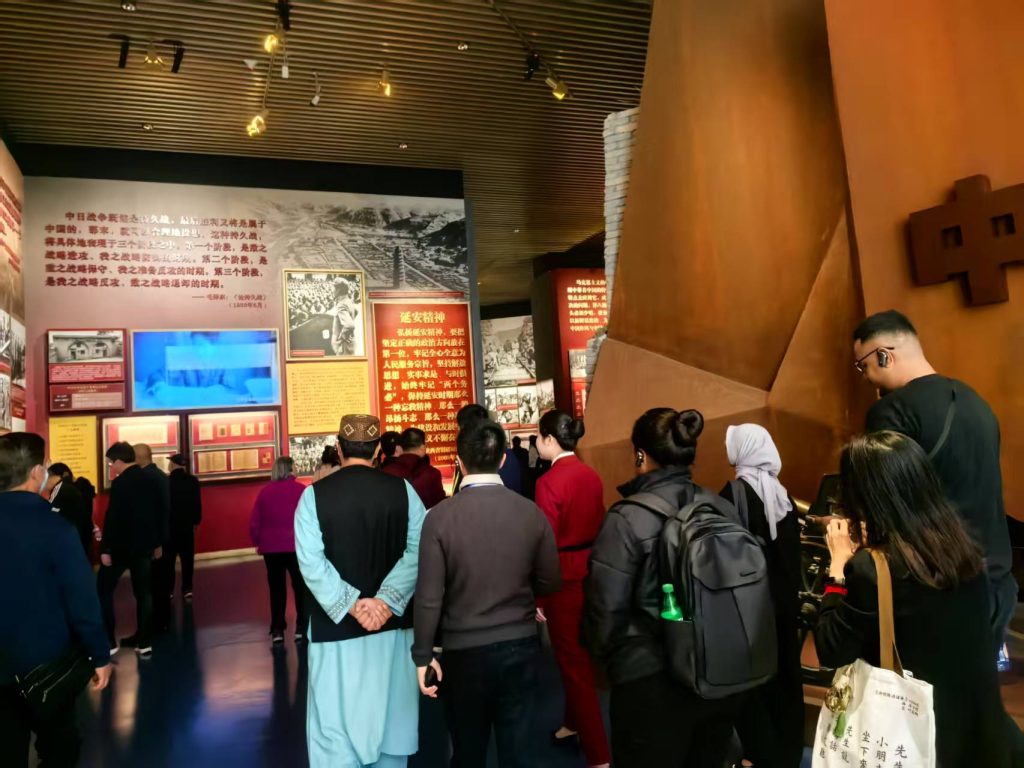
In the “Flying Over China” cinema immersive experience space, a large spherical hyperbolic screen with a resolution of up to 8K is used to give viewers a lifelike flying perspective.
With the use of various environmental effects such as lightning, smoke, rain and wind, combined with the content of the film, the simulation of the flying experience creates a realistic sensation, allowing participants to fly over revolutionary holy sites, overlook the beautiful China, and visit major projects such as “China’s Cars, China’s Roads, China’s Bridges, and China’s Ports”, and also follow the footsteps of aerospace and deep-sea exploration, reaching for the moon and capturing turtles in the world’s five oceans.
The foreign journalists concluded their tour of museum filled with awe, describing it as insightful journey into the rich history of China under the visonary leadership of the CPC. The musuem has become a popular destination in the past year for the Chinese people themselves and foreignes to learn about the centenary experience of CPC and the Chinese people.
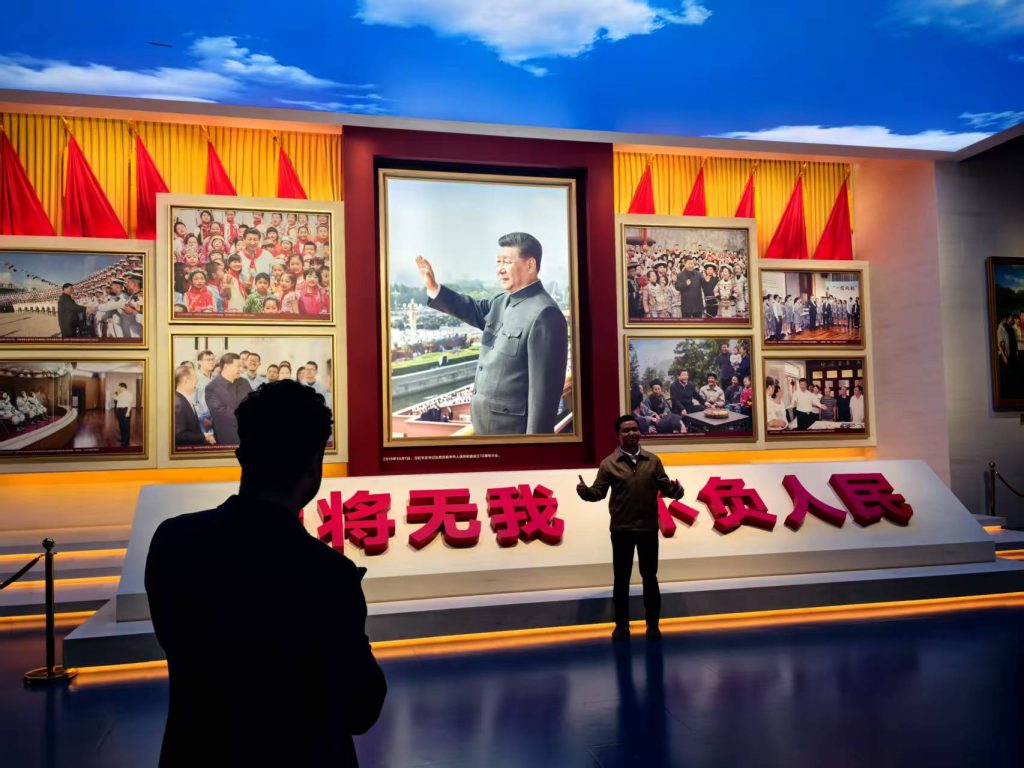
The foreign journalists were also taken on a tour of iOIYI center and the Lenovo headquarter in Beijing and shown their cutting-edge technology.
iQIYI is a Chinese online video platform headquartered in Beijing, whilst Lenovo is multi-national Chinese business located in Beijing. Lenovo specialises in the production of personal computers, tablet computers, smartphones, workstations, servers, electronic storage devices, IT management software and smart televisions.
By DELI-SHARON OSO
In Beijing, China

